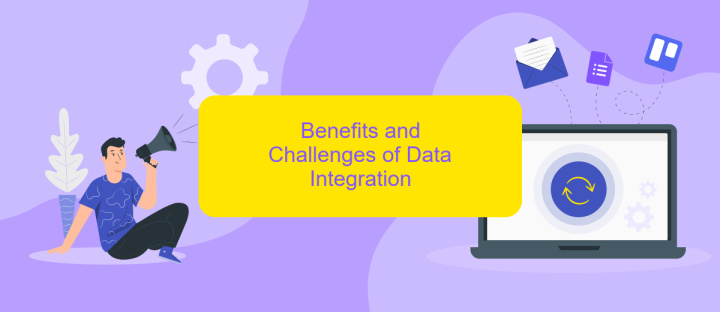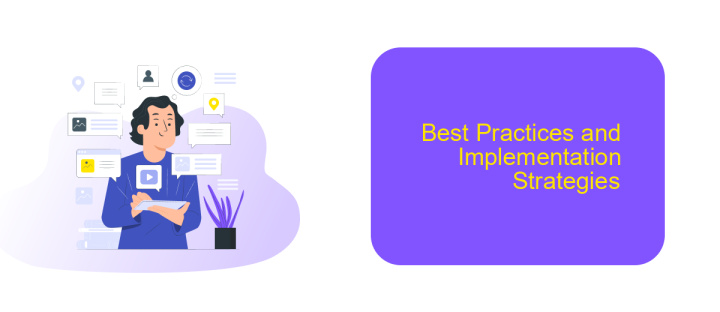Data Integration Use Cases
Data integration is a critical process in today's data-driven world, enabling organizations to merge information from various sources into a unified view. This article explores key use cases of data integration, highlighting its importance in enhancing decision-making, improving operational efficiency, and driving innovation. Whether in healthcare, finance, or retail, the benefits of effective data integration are far-reaching and transformative.
Introduction and Overview
Data integration is a critical process for organizations aiming to consolidate information from various sources into a unified view. This process not only enhances data accessibility but also improves decision-making and operational efficiency. By leveraging data integration, businesses can achieve a holistic view of their operations, enabling more accurate analysis and strategic planning.
- Combining data from multiple databases for comprehensive reporting.
- Synchronizing information across different applications to ensure consistency.
- Enabling real-time data updates for dynamic business environments.
- Facilitating seamless data migration during system upgrades or mergers.
One effective tool for achieving seamless data integration is ApiX-Drive. This service simplifies the process by providing pre-built connectors and automated workflows, reducing the need for manual coding. By utilizing ApiX-Drive, organizations can quickly set up integrations and maintain data consistency across various platforms, enhancing their overall data strategy.
Data Integration in Real-World Applications

Data integration plays a critical role in real-world applications by enabling seamless connectivity between disparate systems. For instance, in the healthcare sector, integrating patient data from various sources such as electronic health records (EHRs), lab results, and wearable devices ensures comprehensive and timely medical care. Similarly, in the retail industry, data integration helps in consolidating customer information from online and offline channels to provide a unified view, enhancing personalized marketing efforts and improving customer experiences.
Modern tools and services like ApiX-Drive simplify the setup of these integrations, allowing businesses to connect their applications without extensive technical expertise. By offering a user-friendly interface and pre-built connectors, ApiX-Drive enables organizations to automate data flows and synchronize information across platforms efficiently. This not only reduces the time and cost associated with manual data handling but also ensures data accuracy and consistency, which are crucial for making informed business decisions.
Benefits and Challenges of Data Integration

Data integration is essential for modern businesses, enabling them to combine data from various sources into a unified view. This process enhances decision-making, improves efficiency, and provides a comprehensive understanding of business operations. By integrating data, companies can streamline processes, reduce redundancy, and ensure data consistency across systems.
- Improved Data Quality: Integration helps in eliminating data silos, resulting in more accurate and consistent data.
- Enhanced Collaboration: Teams can access the same data, fostering better communication and collaboration.
- Cost Efficiency: Automating data integration reduces manual efforts and associated costs.
- Better Decision Making: Unified data provides a holistic view, aiding in more informed decision-making.
However, data integration comes with challenges such as data security, compatibility issues, and the complexity of integrating multiple data sources. Tools like ApiX-Drive can simplify this process by offering seamless integration solutions, reducing the technical burden on businesses. Despite these challenges, the benefits of data integration far outweigh the difficulties, making it a critical component for business success.
Best Practices and Implementation Strategies

When implementing data integration solutions, it's crucial to follow best practices to ensure seamless and efficient operations. Begin by clearly defining your integration objectives and identifying the data sources and destinations involved. This will help in creating a structured plan and avoid potential pitfalls.
Choosing the right tools and platforms is equally important. ApiX-Drive, for instance, offers a user-friendly interface and robust features that simplify the integration process. It supports a wide range of applications and can automate data transfer, reducing manual efforts and errors.
- Define clear integration objectives
- Identify all data sources and destinations
- Choose reliable integration tools like ApiX-Drive
- Automate data transfer to minimize errors
- Regularly monitor and update integrations
Regular monitoring and updates are essential to maintain the efficiency and accuracy of your integrations. By adhering to these best practices and leveraging powerful tools, organizations can streamline their data integration processes and achieve better data consistency and accessibility.
- Automate the work of an online store or landing
- Empower through integration
- Don't spend money on programmers and integrators
- Save time by automating routine tasks
Future Trends and Innovations in Data Integration
As we look towards the future of data integration, several trends and innovations are set to transform the landscape. One significant trend is the increasing adoption of artificial intelligence and machine learning to automate and enhance data integration processes. These technologies enable more intelligent data mapping, anomaly detection, and real-time data processing, making integrations faster and more reliable. Additionally, the rise of cloud-native data integration platforms is empowering organizations to scale their data operations effortlessly, ensuring seamless data flow across hybrid and multi-cloud environments.
Another notable innovation is the growing emphasis on low-code and no-code integration tools, which democratize data integration by enabling non-technical users to set up and manage integrations. Services like ApiX-Drive are at the forefront of this movement, providing user-friendly interfaces and pre-built connectors that simplify the integration process. This shift not only reduces the dependency on IT departments but also accelerates the time-to-value for data projects. As the demand for real-time data insights continues to grow, these trends and innovations will play a crucial role in shaping the future of data integration.
FAQ
What is data integration?
Why is data integration important for businesses?
What are some common use cases for data integration?
How can I automate data integration processes?
What challenges might I face with data integration?
Time is the most valuable resource in today's business realities. By eliminating the routine from work processes, you will get more opportunities to implement the most daring plans and ideas. Choose – you can continue to waste time, money and nerves on inefficient solutions, or you can use ApiX-Drive, automating work processes and achieving results with minimal investment of money, effort and human resources.


